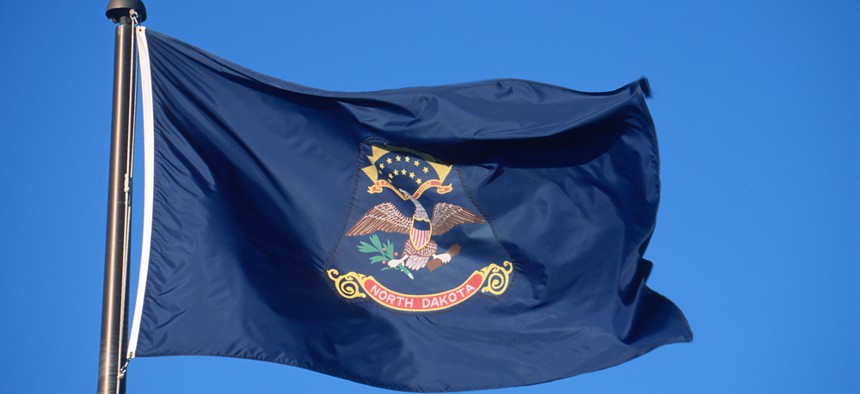Searching for the Good Life in the Bakken Oil Fields

Visions of America / Shutterstock.com

Connecting state and local government leaders
A seven-year oil boom in North Dakota has drawn thousands of investors, laborers, and fortune-seekers. But from behind the counter of a local truck stop, it’s unclear just how much anyone is winning.
ode into the Bakken in a dusty car with Minnesota plates and “Highway to Hell” blasting on the radio, looking for a job where they wouldn’t ask too many questions.
The oil boom had drawn thousands of capitalists, laborers, and fortune-seekers—more than a few outlaws, too—who had arrived with much the same purpose over the last seven years. As oil production hit 1 million barrels a day this past spring, the state began a marketing push to woo even more workers with the slogan “Find the Good Life in North Dakota.”
So there I was: chasing the good life down Highway 85, past the offices for tractor and truck and drilling companies, across the bridge over the Missouri River into McKenzie County, population 9,314. Green and brown buttes sloped over the prairie, and fathers and their sons fished at a sliver of water shaped like a steer’s horns.
An enormous white bust of Abraham Lincoln stood by the road, near an RV park and billboard for a gravel site. I would soon learn that Abe, with the long crack across his neck, was just about the only government figure keeping eyes on this stretch.
The road had not been built to hold 12,000 vehicles a day between Williston and Watford City, a sixfold increase from before the oil boom. Now the highway between those cities was being widened from two to four lanes, as part of the largest road construction efforts in state history. Motorists tended to ignore the 45-mile-an-hour speed limit in the construction zone, and flattened traffic cones lined the roadside. Around here, you earned more the faster you moved.
I drove past Enbridge, a company whose pipelines move crude oil across the country for refining, then the Ragged Butte Inn and a sign bearing the Ten Commandments. Just ahead was a “now hiring” sign at the only sizable stop I’d seen in more than 20 miles: the Wild Bison Travel Center off Roughneck Road, just before the highway sharply curved east.
Inside the truck stop, the counters displayed barbecue lighters resembling single-shot bolt action rifles and CDs with song titles like “Oilfield Trash With Oilfield Cash.” A red barrel of 5-Hour Energy Shots advertised: No crash later. Sugar free. Four calories. Feel it in minutes.
“What do you mean?” I asked.
“Can you work a cash register?” he said.
I told him about my teenage stint as a Target cashier during the summer of 2002, and he hired me at $14 an hour. That was exactly twice what Target had paid me.
Randy had spent 13 years running a Pilot truck stop in central Montana, and he later told me he’d upheld high standards there. But it was so hard for stores in the Bakken to find and keep retail workers that he had to hire nearly everyone who walked in. People would stay for just a couple of weeks or months until they found higher-paying jobs, so businesses had to pay even the least-skilled workers double the minimum wage just to stay open.
“Hey, I have a question for you,” Randy said on my first day of work, after copying my driver’s license and filing my employment papers.
I looked up, expecting an inquiry about my skills or job history.
“You a Vikings fan?”
The manager, a jovial man named Randy Roth, glanced at my application, where I had listed a few newspaper reporting jobs, and asked me if I was any good with computers. (Like everyone else in this story, Randy later became aware that I was writing an article and allowed me to use his real name.)




